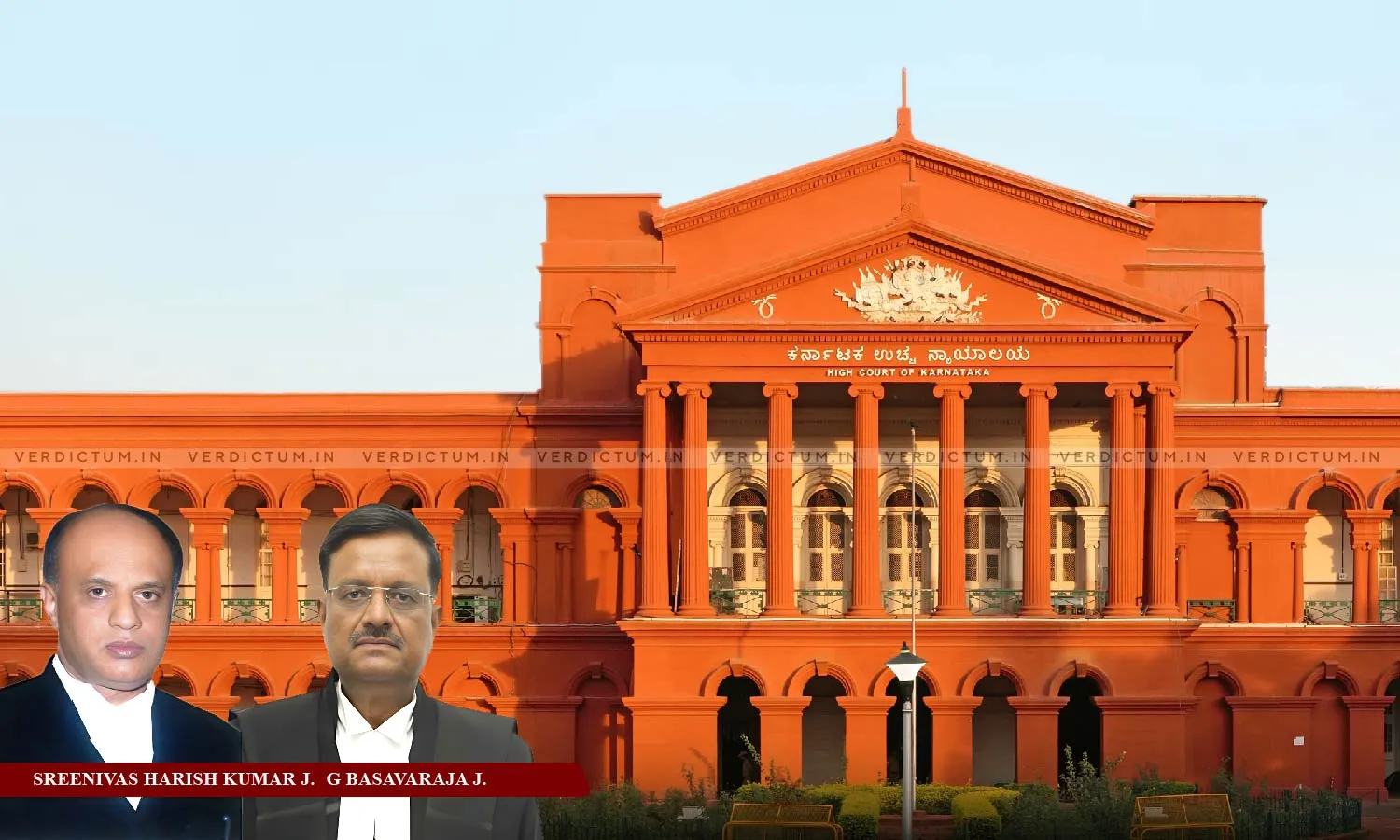S. 149 IPC Cannot Be Invoked Merely Because There Are 5 Or More Accused: Karnataka HC Explains Subtle Distinction Between 'Common Intention' & 'Common Object'

The Karnataka High Court explained the subtle distinction between 'common intention' under Section 34 IPC and 'common object' under Section 149 IPC.
The court noted that the investigating officers and trial courts routinely invoke section 149 of IPC whenever number of accused persons is five or more, and section 34 of IPC whenever their number is more than one and less than five.
In that context, the Bench of Justice Sreenivas Harish Kumar and Justice G Basavaraja observed that, "if the common feature in section 34 and section 149 of IPC is participation of several persons, notable distinction is, common intention requires prior meeting of minds or pre-concert, but common object does not require that element; in order to invoke section 149 of IPC, a gathering of several persons must be proved to be an unlawful assembly for the purposes enumerated in section 141 of IPC."
HCGP Rashmi Yadav appeared for the appellant, while Senior Advocate Hashmath Pasha, among others, appeared for the respondents.
In this case, the deceased's wife contested the acquittal order passed by the Sessions Court. The accused, respondent nos. 1 to 6, faced trial for offences under Sections 143, 148, 302, 201, 114, read with 149 of the IPC.
In 2011, the wife had reported that she had discovered her husband's dead body in a pool of blood, and that she suspected the involvement of the accused due to their existing differences. However, the accused were acquitted based on the Court's findings that the testimonies of eyewitnesses were unreliable, the motive was not established, and the recovery of weapons and clothes from the accused was considered doubtful.
On reappraising the evidence and testimonies of the witnesses, the Court concluded that, "that testimonies of PWs.2, 3 and 4 are trustworthy. The efforts made by the defence counsel to discredit these three witnesses have gone futile. It appears that the trial court has searched for the reasons with a view to disbelieving their testimonies."
The Court also observed that all the evidence disclosed common intention, as all the accused had different reasons to hate the deceased. In that context, it was said that, "The evidence given by PW1 and PW5 discloses it. All the accused gathered in the house of accused no.7 a few hours before the incident occurred, and all of them left the house seeing the deceased leaving the house in the afternoon to get his mobile phone repaired. All these factual situations only depict common intention though the accused were six in number. Therefore accused cannot be convicted for offences under sections 143 and 148 of IPC. However, section 34 can be invoked".
Referring to precedents, the court said:"
"If the common feature in section 34 and section 149 of IPC is participation of several persons, notable distinction is, common intention requires prior meeting of minds or pre-concert, but common ob ject does not require that element; in order to invoke section 149 of IPC, a gathering of several persons must be proved to be an unlawful assembly for the purposes enumerated in section 141 of IPC. A person may become a member of unlaw ful assembly without prior concert and if the evidence discloses his overt act in one way or the other, he is as much liable for all the offences committed by the unlawful assembly as the other member even though the latter’s overt act is different. Only from the facts and circumstances of a given case , a decision either to invoke section 34 or section 149 of IPC must be taken ."
Subsequently, the appeals were allowed and the accused were convicted for murder under the IPC.
Cause Title: The State of Karnataka vs Rajeevalochanababu & Ors.
Click here to read/download the Judgment

